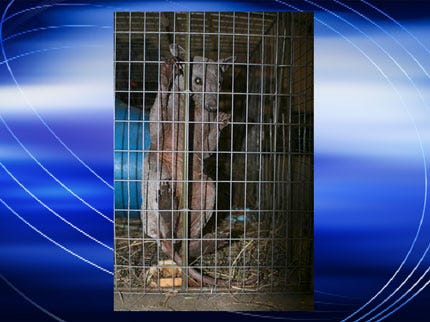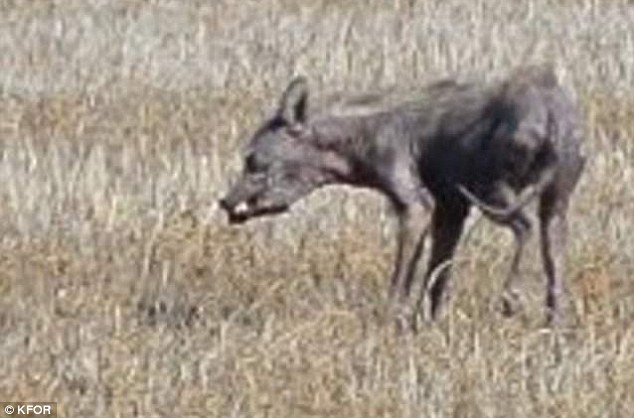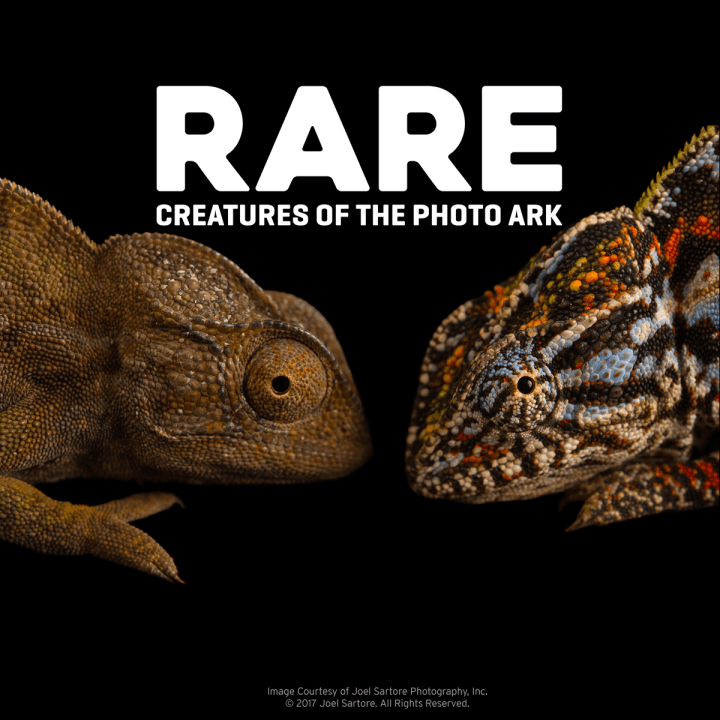
So you think you know all the animals that live in Oklahoma? Well, think again! The “Strange Animals In Oklahoma” guide is here to unveil a hidden world of fascinating creatures that you never knew existed in the heartland of America. From peculiar insects to mysterious reptiles, this comprehensive guide will take you on a captivating journey through the lesser-known wildlife of Oklahoma. Get ready to be amazed and discover a whole new side to the state’s natural wonders.

The American Burying Beetle
Description and Characteristics
The American Burying Beetle, also known as Nicrophorus americanus, is a fascinating and unique species found in Oklahoma. With an average length of about 1.5 inches, these beetles have distinct markings that make them easily recognizable. They have a shiny black body with bright orange markings on their elytra, or wing covers. These markings vary in size and shape, providing a unique pattern for each individual beetle.
Another interesting characteristic of the American Burying Beetle is its specialized adaptations for carrion feeding. These beetles are one of the few species that bury the carcasses of small animals to use as a food source and breeding ground. They have strong forelegs for digging, specially modified antennae that can detect the scent of decaying flesh, and a unique oil secretion that repels predators.
Habitat
The American Burying Beetle is primarily found in grasslands and forested areas of Oklahoma. They prefer habitats with a mix of open spaces and dense vegetation, as this provides them with both suitable breeding grounds and ample food sources. They can also be found in agricultural fields, as long as there is sufficient wildlife diversity to support their scavenging habits.
Conservation Status
Unfortunately, the American Burying Beetle is currently listed as an endangered species. Factors such as habitat loss, pesticide use, and the decline of its primary food source, small carrion, have contributed to its declining population. Efforts are being made to conserve this unique beetle, including habitat restoration and captive breeding programs. It is important to protect the habitat of the American Burying Beetle to ensure its continued survival and maintain the balance of ecosystems it contributes to.
The Alligator Snapping Turtle
The Appearance of Alligator Snapping Turtle
The Alligator Snapping Turtle is arguably one of the most intimidating creatures you may come across in Oklahoma. With a prehistoric appearance and a massive size, these turtles can reach weights of up to 220 pounds and shell lengths up to 26 inches. They have a large, muscular head with a distinct hooked beak and powerful jaws, reminiscent of an alligator. Their rough, textured shell is covered in ridges and is often coated in algae, which helps them camouflage in their aquatic habitat.
Behavior and Lifestyle
Alligator Snapping Turtles are predominantly aquatic and can be found in freshwater habitats such as rivers, swamps, and lakes. They are highly skilled hunters and have a unique method of luring their prey. These turtles have a fleshy pink appendage located inside their mouth that resembles a worm. By leaving this appendage exposed while lying motionless on the riverbed, they attract unsuspecting fish, frogs, and small mammals into their powerful jaws.
Despite their fierce appearance, Alligator Snapping Turtles are generally not aggressive towards humans unless provoked. They are known for their docile demeanor when left undisturbed. However, their powerful bite can cause serious injury, so it is essential to exercise caution when encountering one in the wild.
Importance and Threats to the Ecosystem
Alligator Snapping Turtles play a vital role in the ecosystem as top-tier predators. They help control the population of various aquatic species and contribute to the overall health and balance of their habitat. Unfortunately, due to habitat destruction, water pollution, and overharvesting, these turtles are facing significant threats. Their long lifespan and low reproductive rate make it challenging for their populations to recover once they are depleted. Efforts are being made to protect their habitat, regulate harvesting, and increase awareness about the importance of their conservation.
The Lesser Prairie Chicken
Lesser Prairie Chicken Appearance
The Lesser Prairie Chicken, also known as Tympanuchus pallidicinctus, is a small bird species that inhabits the grasslands of Oklahoma. These chickens have unique physical features that set them apart from other avian species. They have short, rounded wings and long, pointed tails that enable fast and agile flight. The males have vibrant plumage comprising a mix of reddish-brown, black, and white feathers, with striking orange air sacs on their necks. In contrast, females have drabber, mottled feathers that provide excellent camouflage for nesting.
Behavioral Traits
The Lesser Prairie Chicken is known for its elaborate courtship display, which is a sight to behold. During mating season, males gather in specific areas called leks to attract females. They inflate the orange air sacs on their necks and create a booming sound by rapidly beating their wings. This display is a visual and auditory spectacle, serving to attract females and establish dominance over other males.
Population and Conservation Efforts
The Lesser Prairie Chicken faces various threats to its survival, primarily due to habitat loss and fragmentation. The conversion of native grasslands into agricultural fields and urban areas has significantly impacted their population. Additionally, climate change and increasing disturbances have disrupted their breeding and nesting patterns. Conservation efforts include habitat restoration, creation of protected areas, and collaboration with landowners to implement sustainable practices. It is crucial to protect the remaining populations to maintain the ecological balance of the grassland habitats.
The Texas Horned Lizard
Physical Appearance and Attributes
The Texas Horned Lizard, also known as Phrynosoma cornutum, is an extraordinary creature found in Oklahoma. They get their name from the unique, horn-like projections on their heads and their scaly, spiky appearance. These lizards have a distinctive body shape, with a broad, flattened torso and a short tail. Generally, their coloration blends in with the surroundings, ranging from shades of brown, gray, and tan, helping them camouflage effectively.
Aside from their physical appearance, Texas Horned Lizards have a remarkable defense mechanism. When threatened, they can squirt blood from the corners of their eyes, confusing and deterring potential predators. This unique trait, coupled with their ability to puff up their bodies and hiss loudly, makes them formidable opponents.
Habitat and Geographic Distribution
Texas Horned Lizards are native to the arid regions of Oklahoma, where they inhabit a variety of habitats, including shrublands, grasslands, and deserts. They prefer areas with loose, sandy soil, as it aids in their burrowing behavior. Throughout their range, they can be found in the central and western parts of the state.
Conservation Measures
The Texas Horned Lizard population has experienced a decline due to factors such as habitat loss, fragmentation, and pesticide use. Efforts are being made to protect and enhance their habitat, including establishing conservation areas and promoting sustainable land management practices. Additionally, educating the public about the importance of these creatures and their role in the ecosystem is crucial for their long-term survival.

The Prairie Rattlesnake
How to Identify the Prairie Rattlesnake
The Prairie Rattlesnake, scientifically known as Crotalus viridis, is a venomous snake species found in Oklahoma. Identifying these snakes can be crucial for personal safety. They have a stout build, reaching lengths of up to 4 feet. Their coloration typically consists of a grayish or yellowish-brown base with dark brown markings along their back. One of the most distinctive features is their rattle, located at the end of their tail, which makes a buzzing sound when vibrated.
Habitat and Food Habits
Prairie Rattlesnakes are well-suited for survival in the grasslands and prairies of Oklahoma. They are adaptable and can be found in a variety of habitats, ranging from open grasslands to rocky slopes. These snakes are ambush predators, primarily feeding on small mammals such as mice, rats, and rabbits. Their venomous bite immobilizes their prey, allowing them to consume their meal at leisure.
Venom and How it Affects Humans
As with all rattlesnake species, the venom of the Prairie Rattlesnake poses a potential threat to humans. Their venom is a potent cocktail of enzymes and toxins that can cause significant tissue damage and even death if left untreated. If bitten, it is crucial to seek immediate medical attention. However, it is important to note that most rattlesnake bites occur when the snake feels threatened and is defending itself. Avoiding unnecessary encounters and respecting their natural habitat is the best way to prevent snakebite incidents.
The Ozark Big-Eared Bat
Characteristics and Features
The Ozark Big-Eared Bat, also known as Corynorhinus townsendii ingens, is a fascinating mammal species that can be found in the caves and forests of Oklahoma. As their name suggests, they have distinctively large ears, which can reach widths of up to 2.5 inches. These ears are a crucial adaptation for echolocation, allowing them to navigate and locate prey in the dark.
In terms of physical appearance, Ozark Big-Eared Bats have soft, dense fur that varies in color from light brown to grayish-brown. They have a wingspan of approximately 10-12 inches, which enables them to fly swiftly and efficiently through the night.
Habitat and Preferences
Ozark Big-Eared Bats primarily inhabit caves and mines, using them as roosting sites during the day. They prefer caves with stable environmental conditions, such as a consistent temperature and humidity. These bats are known for their fidelity to specific hibernation sites, returning to the same locations year after year.
In terms of food preferences, the Ozark Big-Eared Bat predominantly feeds on moths and other flying insects. Their unique echolocation abilities allow them to locate and catch their prey mid-flight, ensuring a steady food supply.
Endangered Status and Conservation
Due to habitat loss, disturbance, and white-nose syndrome, the Ozark Big-Eared Bat is currently listed as an endangered species. White-nose syndrome, a fungal disease that affects hibernating bats, has decimated populations throughout North America. Conservation efforts have focused on protecting and managing their roosting sites, monitoring populations, and raising public awareness about the importance of bats in maintaining a balanced ecosystem.

The Lesser Long-Nosed Bat
Distinguishing Attributes and Features
The Lesser Long-Nosed Bat, scientifically known as Leptonycteris yerbabuenae, is an intriguing species found in Oklahoma. These bats have unique physical attributes that set them apart. They have elongated noses and tongues, which enable them to feed on nectar from flowers. Their fur is a mix of various shades of brown, and they have distinctive facial markings, including a pale mask and long, erect ears.
Life Cycle and Habitat
The Lesser Long-Nosed Bat plays a critical role in pollination due to their dietary habits. They feed primarily on nectar and pollen from agave, cacti, and various night-blooming flowers. These bats are highly migratory, traveling long distances to follow the flowering seasons of their preferred food sources. During migration, they seek roosting sites in caves and abandoned mines to rest during the day.
Importance to Ecosystem and Threats
As important pollinators, Lesser Long-Nosed Bats contribute to the reproduction and survival of various plant species in Oklahoma. They help maintain the genetic diversity of plants and facilitate the production of fruits and seeds. Unfortunately, these bats face several threats, including habitat loss, disturbance at roosting sites, and the use of pesticides. Conservation efforts focus on protecting critical roosting sites, promoting habitat restoration, and advocating for responsible pesticide use.
The Collared Lizard
Physical Traits and Appearance
The Collared Lizard, scientifically known as Crotaphytus collaris, is a distinctive reptile species found in Oklahoma. These lizards have a striking appearance, characterized by their vibrant coloration and unique patterns. Another distinguishing feature is the prominent collar, which gives them their common name. The collar, located around their neck, is typically a bright yellow or orange color, contrasting with the dark base coloration of their body.
Behavioral Traits
Collared Lizards are diurnal, meaning they are active during the day. They are excellent climbers and are often observed basking in the sun on rocky outcrops or tree branches. Their adept climbing skills enable them to navigate their habitat efficiently. These lizards are also known for their territorial behavior and can display aggressive behavior towards intruders.
Habitat and Threats
Collared Lizards are typically found in rocky habitats, such as cliffs, rocky outcrops, and boulder fields. They prefer areas with ample hiding places and sun-exposed surfaces for basking. Unfortunately, rapid urbanization and habitat destruction have resulted in the loss and fragmentation of their preferred habitats. Efforts are being made to protect and restore these habitats, ensuring the survival of Collared Lizards and the overall biodiversity of the region.

The Black-Tailed Prairie Dog
Appearance and Behavior
The Black-Tailed Prairie Dog, scientifically known as Cynomys ludovicianus, is a unique rodent species found in the grasslands of Oklahoma. They are characterized by their stout, compact bodies, short legs, and distinctive black-tipped tails. These rodents are highly social and live in large colonies called towns, which can span several acres. Within these towns, individual prairie dogs construct elaborate burrow systems that provide shelter and protection.
Black-Tailed Prairie Dogs are known for their complex communication system. They emit a series of barks and chirps to warn the colony of approaching predators, helping to keep the community safe.
Role in the Ecosystem
Prairie dogs play a vital role in the grassland ecosystem. Their grazing and burrowing activities can shape the landscape and create diverse habitats for numerous other species. Their burrows, which can extend several feet underground, provide shelter for a variety of animals, including burrowing owls, snakes, and ferrets. Additionally, their grazing helps maintain the health of grasslands by preventing the encroachment of woody vegetation.
Conservation Status and Efforts
The Black-Tailed Prairie Dog population has undergone significant declines due to habitat loss and eradication efforts. Conversion of grasslands to agricultural fields and the perception of prairie dogs as pests have contributed to their decline. Conservation efforts aim to protect and restore their habitats, manage their populations sustainably, and educate the public about their ecological importance. It is crucial to recognize the role of prairie dogs as keystone species and work towards their conservation.
The Mountain Lion
Physical Characteristics and Lifestyle
The Mountain Lion, scientifically known as Puma concolor, is a majestic and elusive big cat species that can be found in Oklahoma. With a sleek body, well-muscled build, and impressive size, they are one of the largest predatory mammals in North America. While males can weigh up to 200 pounds, females are generally smaller, weighing around 100 pounds. Their fur is typically tan or brown, providing excellent camouflage in their natural habitat.
Mountain Lions are solitary creatures, preferring to roam vast territories to find prey. They are primarily nocturnal, using their exceptional vision and stealth to hunt under the cover of darkness. They are powerful and agile hunters, capable of taking down large prey such as deer or elk.
Habitat and Distribution
Mountain Lions are adaptable and can thrive in various habitats, including forests, mountains, and deserts. In Oklahoma, they are typically found in the eastern regions, where they have access to the dense forests and prey populations they require. However, their range extends into other parts of the state, depending on the availability of suitable habitats.
Interaction with Humans and Conservation Measures
As human populations continue to expand, interactions between Mountain Lions and humans become more frequent. While these big cats generally avoid contact with humans, conflicts can arise in cases of habitat encroachment or when Mountain Lions perceive a threat to their cubs or territory. Conservation measures aim to promote coexistence between humans and Mountain Lions, including creating protected areas, implementing responsible land management practices, and educating the public about appropriate behavior in cougar country.
In conclusion, Oklahoma is home to a diverse range of unique and fascinating animals. From the American Burying Beetle to the Mountain Lion, each species plays a vital role in maintaining the ecological balance of the state. It is crucial to recognize the importance of conserving their habitats and implementing sustainable practices to ensure their continued existence in the wild. By respecting and protecting these strange animals, we contribute to the overall health and biodiversity of Oklahoma’s ecosystems.






